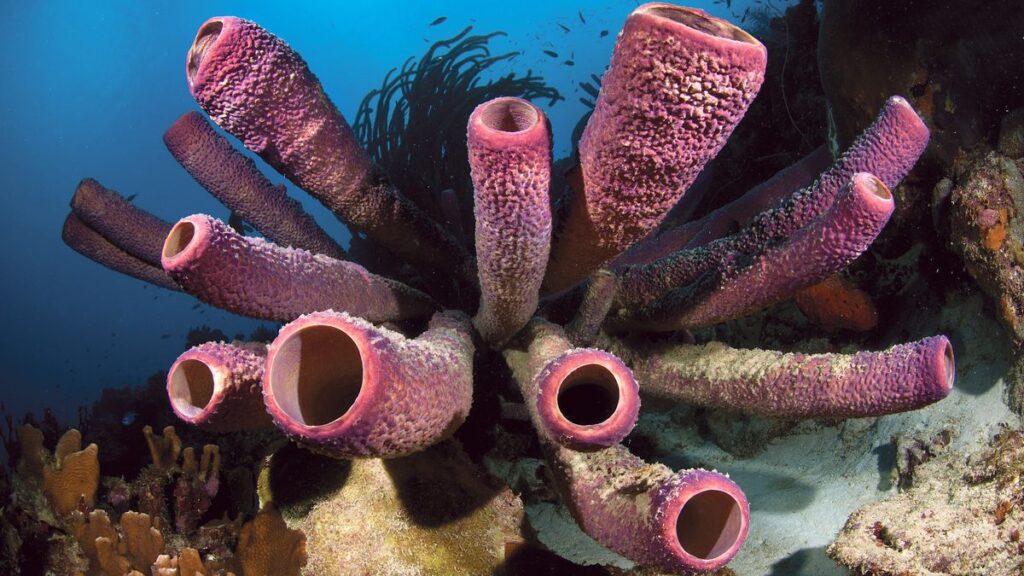On the shores of Lake Bellevue in Alberta, Canada, Robert Tymofichuk approached two women sitting in lawn chairs. He asked an unusual question: Would they mind if he launched his hovercraft nearby?
After 1,800 hours of work, he was eager to see if it would work. With their approval, he climbed into the cab with his wife, Shelley, and turned on the ignition. The engine, salvaged from a 1985 Toyota Celica, roared to life. The vehicle sped across the lake.
“There’s a risk that this thing could crash into the water and sink like a rock,” said Tymofichuk, a teacher at nearby New Myrnam School. About a kilometre from shore, he was tempted to turn off the engine. “My wife is yelling at me. She’s like, ‘Robert, what are you doing, what are you doing?’ I’m like, ‘I need to see if this thing floats.’ She’s like, ‘Not here!’”
They were far from shore and the water was deep. He used his common sense and listened to his wife as he headed for shallower water. He cut the engine. The hovercraft floated, bobbing in the sun and a gentle wind.
Falling in love with the hovercraft
Despite their cool name, hovercrafts are not flying cars. The Jetsons Or Back to the Future: Part IIInstead, think of something like a boat that, instead of floating on water, rides on a cushion of air.
They are capable of traversing the ocean, wet marshes and sandy beaches. This versatility makes them ideal for the US Navy and Marines, who use them to transport soldiers and equipment from sea to land. For 40 years, the massive Mountbatten-class hovercraft carried passengers and automobiles across the English Channel.
Tymofichuk fell in love with these machines as a child in rural Alberta. On his family’s small cattle ranch, when he wasn’t fixing things, he would watch one of the two TV channels, where he saw a segment showing a hovercraft skimming effortlessly across the water. He became obsessed with them. In eighth grade, Tymofichuk ordered a set of instructions from an Illinois company called Universal Hovercraft and began what would become a five-year project.

He remembers the day he finished building his first hovercraft in 1986. “It was absolutely beautiful,” he said. His mother watched, ready to film. “I started the engine, I revved the engine, and nothing.” He eventually got it working. But over the years, he noticed some limitations. It couldn’t carry much cargo or fuel, didn’t have a cabin to protect passengers from splashing water and mud, and couldn’t climb modest grades. Tymofichuk developed it in 2002 after a drought turned Lake Eliza to mud, exposing the massive skulls of long-dead bison — intriguing discoveries for a curious professor.
The next generation
Years later, he decided to build another hovercraft. In 2022, he posted a video on YouTube, now viewed over 100,000 times, documenting the year-long construction process.
The vehicle is a mix of recycled components, like the Toyota engine, stripped of excess wires to make it as light as possible, and custom-made parts. He used a discarded fiberglass shell from an abandoned building. His wife sewed together the 107 segments of the rubber skirt, which traps air under the vehicle. For the joystick, he molded papier-mâché onto its handle and covered it in fiberglass. Finally, he attached the cabin from a 1997 Jeep Grand Cherokee, adding a heater, ham radio, windshield wipers and seats from a Volkswagen Jetta. The finishing touch? A glossy coat of bright red paint.





Tymofichuk isn’t the only amateur scientist obsessed with hovercraft. He followed in the footsteps of William Bertelsen, who became famous after this very publication featured his “wheelless car” in 1959. Back then, there was no eBay or Amazon to source parts from, and no Reddit users to turn to for advice.
“Without the Internet, I would never have been able to build that second hovercraft,” Tymofichuk said. It made it easier for him to find specialty stores, like Lone Star Hovercraft, that sell products he couldn’t find in auto parts stores. YouTube, where Tymofichuk has also posted videos of a firewood splitter and a kayak with a battery-powered drill motor, is a valuable source of how-to videos for hovercraft enthusiasts. Tymofichuk spoke enthusiastically about videos from the Hovercraft Club of Great Britain, which holds six to eight races a year, in which participants regularly perform spectacular slide turns and can reach speeds of 80 mph.
Tymofichuk’s hovercraft doesn’t go that fast. It flies at 61 km/h on water, where it is relatively easy to steer, even on fast-flowing rivers, and can glide over rocks, logs and other obstacles that extend up to 20 cm above the surface.
On ice, due to low drag, speeds can reach almost 80 km/h. However, accelerating in this situation is not a good idea. “Imagine a car with the smoothest tires in the entire world,” he said. Now imagine driving this car on ice. On a lake, in an emergency, a hovercraft driver can turn off the engine and the vehicle will safely sink into the water. Stopping on ice is another story. It may be necessary to maneuver directly to get out of a hole. Fast and Furious movie: a complete 180 degree rotation, then applying a push to decelerate.
Tymofichuk doesn’t just do stunts. His hovercraft is ideal for leisurely, long-distance trips, such as on the North Saskatchewan River, where he and his wife camp, prospect for gold and fish for sturgeon in places that are hard to reach by truck or boat.
The last time I spoke to him, Tymofichuk was spending his summer vacation participating in search and rescue missions in Alberta, where wildfires have ravaged thousands of hectares.
During the school year, he shares his passion for tinkering with students through STEM projects. They built a sustainable greenhouse, transformed a school bus into a net-zero emission tiny house, and restored a fleet of electric golf carts. He received the Prime Minister’s Award for Teaching Excellence in 2022 from Justin Trudeau.
“I try to inspire kids,” he says, “to show them that if they want to build a hovercraft, they can do it too. It’s just a matter of determination and willpower.”


